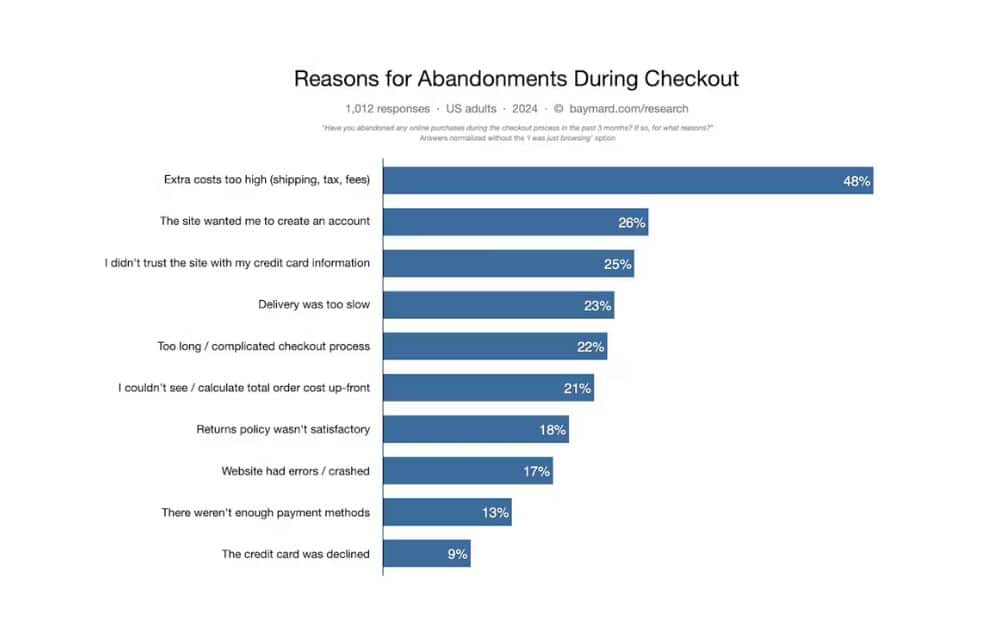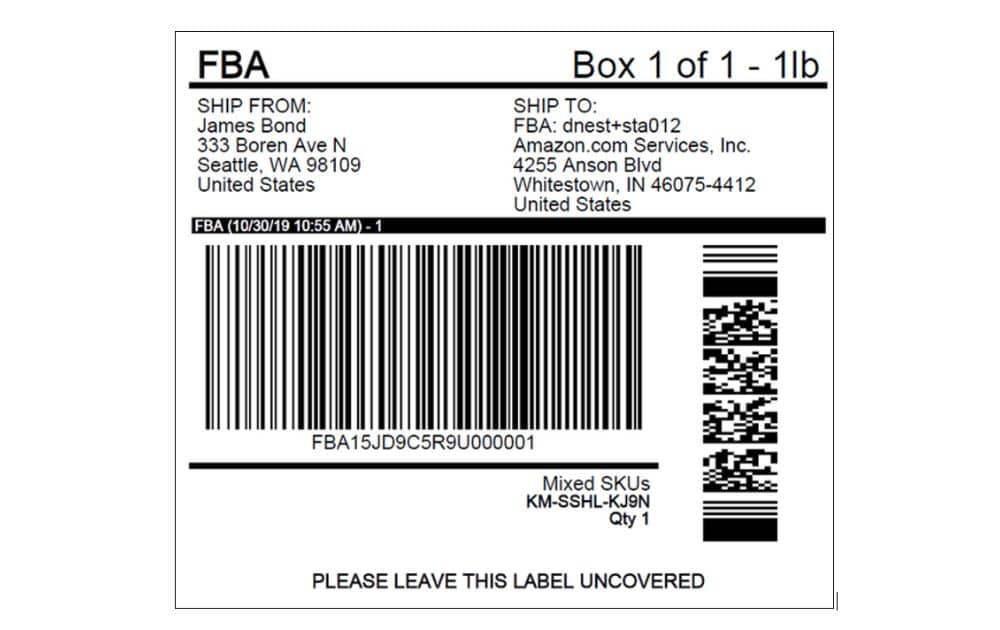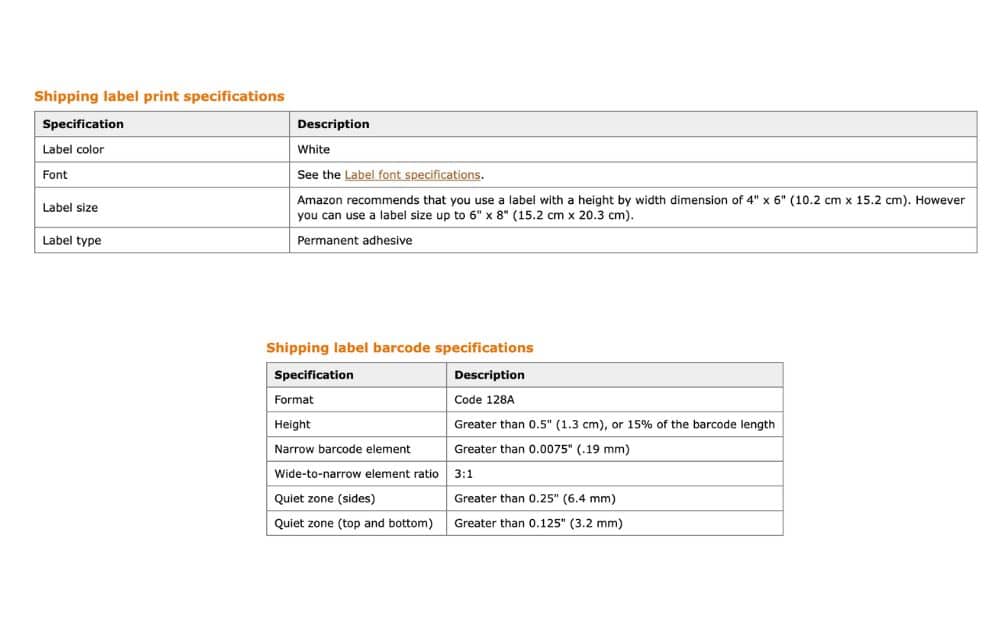Being an Amazon FBA seller allows you to automate much of the shipping, handling, and customer service that an ecommerce business entails.
However, despite the program’s automated services, you still need to understand various aspects of operating your business, including creating Amazon FBA shipping labels.
Let’s discuss the Amazon FBA label requirements, offering practical advice and expert tips to help you master this critical aspect of online selling.
What are Amazon FBA Shipping Labels?
In the context of FBA, Amazon shipping labels are barcode labels used by sellers participating in Amazon’s FBA program. This label contains essential information for tracking and managing inventory within Amazon’s fulfillment centers.
The FBA label ensures that Amazon can accurately receive, store, and ship the product to customers, including international shipping for supported territories.
Here are the main reasons why Amazon FBA shipping labels are critical:
- Inventory Tracking and Management. Each label contains a unique FNSKU barcode that helps Amazon track the product through its entire journey within fulfillment centers. This ensures accurate inventory records and efficient handling.
- Streamlined Logistics. Proper labels allow Amazon to process, sort, and ship products more quickly and accurately, reducing the risk of errors and delays in the delivery process.
- Operational Efficiency. Correct labeling reduces the workload on Amazon’s end for handling inventory, which can help prevent bottlenecks and keep the supply chain moving smoothly.
- Customer Satisfaction. The Baymard Institute states that more than two out of 10 customers would abandon a cart at checkout if the order takes too long to deliver. Accurate and efficient processing enabled by correct labeling leads to faster shipping times and helps sellers navigate shipping delays, enhancing customer satisfaction and loyalty.

Understanding Amazon FBA Shipping Label Requirements
Each detail of an Amazon FBA shipping label plays a role in the seamless inventory processing through Amazon’s logistical network.
Here are the crucial aspects of Amazon FBA box label requirements:
Essential Label Information
Labels must have essential details as part of the FBA labeling requirements, including:
- Seller Name. The Amazon shipping label template must be clearly displayed to identify the origin of the package.
- Ship to Address. This is the fulfillment center address provided by Amazon FBA, specifying the destination of the package. It must be clear and complete so as not to have issues with fulfillment providers.
- Ship From Address. Indicates where the package is being sent from, typically the seller’s location.
- FBA Shipment Identifier. Included in the Amazon FBA label requirements is the scannable barcode, usually the FNSKU, which is exclusive to each SKU managed by Amazon FBA.
Constructing Barcodes for Small Parcel Shipments
To generate unique barcode values for each package in a shipment as part of Amazon FBA label requirements, follow these steps:
- Begin with the Shipment ID and add “U” followed by “000001” to create the barcode for the first package.
- For subsequent packages, increase “000001” incrementally by one for each new package, and append this incremented number along with “U” to the Shipment ID.
- Repeat this process for every package in the shipment.
Internal Use Only Section
When learning how to create shipping labels for Amazon FBA, remember that Amazon label requirements include the Internal Use Only section, which may differ depending on the SKUs in the package:
- For Single SKU Packages: Indicate the quantity of units.
- For Assorted SKUs: Mark as “Assorted SKUs”.
- For Partial Cases or Boxes that Contain Smaller Boxes: Label them as “Partial case.”
Here’s an example of a label adhering to Amazon box label requirements from Amazon Services:

Amazon Shipping Label Print and Barcode Specifications
The specifications for printing Amazon FBA shipping labels ensure that they are easily readable and durable during the handling and shipping process.
Here’s a detailed breakdown of these specifications:
- Label Color. The shipping label for Amazon must be white, which helps enhance the contrast and readability of the printed information and barcodes.
- Font. The specific font details are not provided here, but we advise you to refer to the label font specifications provided by Amazon. This ensures that the text on the label meets readability standards.
- Label Size. Amazon recommends using labels that measure 4″ x 6″ (10.2 x 15.2 cm). However, there is flexibility in using Amazon shipping label printer labels up to 6″ x 8″ inches (15.2 x 20.3 cm) if needed for additional information or larger packages.
- Label Type. Use a permanent adhesive to ensure that the label stays affixed to the package throughout the shipping process, preventing it from peeling off or getting lost.
Shipping Label Barcode Specifications
Here are the recommended specifications for barcodes to be used for Amazon box label prints:
- Format: The barcode format should be Code 128A, a common choice for shipping due to its high-density data encoding capability.
- Height: The barcode height must be greater than 0.52″ (1.3 cm) or 15% of the total length of the barcode, ensuring it is large enough to be scanned easily.
- Narrow Barcode Element: This should be greater than 0.0075″ (0.19 mm), which helps in maintaining the resolution and clarity of the barcode.
- Wide-to-Narrow Element Ratio: Set at 3:1, this ratio is crucial for barcode scanners to distinguish between the different elements within the barcode accurately.
- Quiet Zone: There must be a clear margin around the barcode—greater than 0.25″ (6.4 mm) on the sides and more than 0.125″ (3.2 mm) on the top and bottom. The quiet zone is essential for scanners to recognize the start and end of the barcode without interference from other visual elements on the label.

Amazon FBA Shipping Labels vs. Other Types of Amazon Shipping Labels
As discussed above, Amazon FBA Shipping Labels are used when sellers send their inventory to Amazon’s fulfillment centers.
On the other hand, Amazon FBM shipping labels are used when sellers opt to ship products directly to customers using Amazon’s delivery network but outside the FBA program.
FBM service requires sellers to handle the packing themselves, and then Amazon picks up packages for delivery.
An Amazon return shipping label, meanwhile, allows customers to easily return products. Customers can access these labels through their Amazon account in the “Your Orders” section, select the item to return, and print the provided return label.
This label should be affixed to the package before sending it back via the specified carrier, ensuring a smooth and trackable return process.
Amazon FBA Shipping Labels | Success Tips
Here are some practical tips for handling Amazon FBA shipping labels to ensure a smooth process and prevent potential setbacks:
- Ensure Accuracy of Information. Double-check that the label includes accurate data such as the product’s name, FNSKU, condition (new, used, etc.), and a scannable barcode. Misinformation can lead to processing delays and inventory errors.
- High-Quality Printing. Print labels in high resolution to avoid barcode scanning issues. Use a good quality printer—laser printers are recommended for their clarity and smudge-proof printing. Ensure that the barcode is not distorted and that all text is legible

- Proper Label Placement. Affix the label on a flat, smooth surface of the package without seams, tape, or folds. In doing so, warehouse staff will be able to scan the lable at any stage of the fulfillment process.
- Use Suitable Label Material. Employ labels with strong adhesive qualities that are also tear-resistant to withstand the rigors of shipping. Avoid materials that easily smear or peel off, as these can lead to lost or misrouted items.
- Avoid Covering Up Important Information. When placing the label on your package, ensure that you don’t obscure any critical information, especially the barcode, by packaging tape or covered in any way.
Frequently Asked Questions (FAQs)
What labels should I use for Amazon FBA?
Use labels that are 4″ x 6″, printed on white paper with a strong permanent adhesive. Always use labesl that include a scannable barcode that’s printed in high quality to avoid any scanning issues.
Always check the latest guidelines on Amazon Seller Central to comply with specific requirements.
How do I get FBA labels from Amazon?
Log in to Seller Central and navigate to ‘Inventory’. Then, select the products you want to ship and use the ‘Print Item Labels’ option. Amazon will generate labels that you can print directly or download as a PDF.
For detailed steps and options, refer to the FBA settings and help guides in Seller Central.
What size are Amazon FBA shipping labels?
Amazon FBA shipping labels are recommended to be 4″ x 6″ (10.2 x 15.2 cm). This size is suitable to accommodate all necessary information and ensure the labels are easily scannable.
Author




